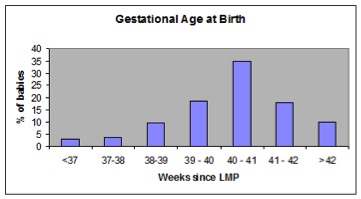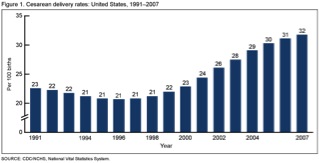Dr. Kathryn Cranford, ND, NHCM, CPM
There is a time and place in birth where, unequivocally, technological intervention can be life-saving. That said, I arrive at the second principle. In pregnancy, often “First do No Harm” means “First Do Nothing”. The medical model is quick to intervene, while leaving things alone is often the best course. When couples first come to me armed with ovulation charts and calendars concerned that they are not getting pregnant, my first intervention is often to have them put all that away and just be with their partner for a while. The cortisol that comes of trying to force something can be the limiting factor. Given, it is not always that simple, but it is powerful to recall that sometimes, it is. In later articles I’ll address options for assisting fertility that live low on the hierarchy of therapeutics, but for now, remember that advising doing nothing is a great option that is often overlooked.
There is much early imaging and genetic testing available to pregnant families these days. Deciding whether or not to engage this testing has always been challenging. There are more options, and in certain populations, testing for some things makes more sense than in others. It is now possible to retrieve, for example, via a simple blood draw at as early as 10 weeks gestation, fetal DNA from the mother’s blood stream that tells us, with greater  than 99% sensitivity, if a baby has a trisomy 21 (for Down Syndrome), 18 or 13.1 “In a general obstetrical population, prenatal testing with the use of cf (cell free) DNA had significantly lower false positive rates and higher positive predictive values for detection of trisomies 21 and 18 than standard screening.2 While it can be useful to have this information earlier than later, the stress of waiting on these test results in the first weeks of pregnancy can be substantial. As my mother said about pregnancy, “we were just pregnant, happy and dumb” of the days when none of this advanced information was even available. Young, healthy people are at low risk of genetic anomalies. Women of more advanced age have more reason to test for genetic concerns. I generally advise that couples undertake such testing only if they would make some change in the course of the pregnancy if they find something substantial.
than 99% sensitivity, if a baby has a trisomy 21 (for Down Syndrome), 18 or 13.1 “In a general obstetrical population, prenatal testing with the use of cf (cell free) DNA had significantly lower false positive rates and higher positive predictive values for detection of trisomies 21 and 18 than standard screening.2 While it can be useful to have this information earlier than later, the stress of waiting on these test results in the first weeks of pregnancy can be substantial. As my mother said about pregnancy, “we were just pregnant, happy and dumb” of the days when none of this advanced information was even available. Young, healthy people are at low risk of genetic anomalies. Women of more advanced age have more reason to test for genetic concerns. I generally advise that couples undertake such testing only if they would make some change in the course of the pregnancy if they find something substantial.
Due date is another concept to be careful when assigning. A recent study looked at the levels of three hormones in the urine of women who were conceiving, and then when they delivered naturally, and found that there are clear markers that indicate ovulation as well as fertilization/implantation. Some women are faster, some slower and the slower women actually, on average also deliver later: “Normally, women are given a date for the likely delivery of their baby that is calculated as 280 days after the onset of their LMP. Yet only four percent of women deliver at 280 days and only 70% deliver within 10 days of their estimated due date, even when the date is calculated with the help of ultrasound. “We found that the average time from ovulation to birth was 268 days – 38 weeks and two days,” said Dr Anne Marie Jukic, a postdoctoral fellow in the Epidemiology Branch at the National Institute of Environmental Health Sciences (Durham, USA), part of the National Institutes for Health. “However, we found that the length of the pregnancies varied by as much as 37 days…The length of human  gestation varies considerably among healthy pregnancies, even when ovulation is accurately measured. This variability is greater than suggested by the clinical assignment of a single ‘due date’. I think the best that can be said is that natural variability may be greater than we have previously thought, and if that is true, clinicians may want to keep that in mind when trying to decide whether to intervene on a pregnancy.”4 In another study, it was found that “ Using the most recently available U.S. period-linked birth and infant death data, we demonstrated that the period of term gestation (37–41 weeks of gestation) is more heterogeneous in mortality risk than previously recognized. Although births at 37 and 38 completed weeks are considered term, these early-term births are consistently associated with significantly higher neonatal and infant mortality rates when compared with births at 39 through 41 weeks of gestation over time.5
gestation varies considerably among healthy pregnancies, even when ovulation is accurately measured. This variability is greater than suggested by the clinical assignment of a single ‘due date’. I think the best that can be said is that natural variability may be greater than we have previously thought, and if that is true, clinicians may want to keep that in mind when trying to decide whether to intervene on a pregnancy.”4 In another study, it was found that “ Using the most recently available U.S. period-linked birth and infant death data, we demonstrated that the period of term gestation (37–41 weeks of gestation) is more heterogeneous in mortality risk than previously recognized. Although births at 37 and 38 completed weeks are considered term, these early-term births are consistently associated with significantly higher neonatal and infant mortality rates when compared with births at 39 through 41 weeks of gestation over time.5
As a ND Midwife, I advise my pregnant clients to consider telling friends and family their 42 week date as due date, or when asked about due date, to give a range rather than a date “Oh, we are due “Mid-May”. This because once they pass that “magical” 40 week date, the phone calls begin and ramp up and up until the stress of explaining why they have not gone in for an induction becomes a barrier to relaxing enough to let labor start naturally. Late term pregnancies can be safely evaluated to screen for problems associated with post 41-week gestations with Biophysical Profile Ultrasound and Non-stress testing. If all looks well, then waiting for the Wisdom of Nature generally proves, well, wise.
 With the US cesarean rate showing ”a very, very slight decline in the cesarean birth rate — 32.7 percent in 2013, down from 32.8 percent of all births in 2012”6 (while ”Since 1985, the international healthcare community has considered the ideal rate for caesarean sections to be between 10-15%.)7 waiting for nature’s timing is, sadly, becoming less common. Early induction attempts that fail because the body is not ready to birth can be avoided by simply being patient, by trusting in the Wisdom of Nature and the Body. Midwives are famous for knitting…keeping their hands busy so that they don’t interfere unnecessarily. I tell my midwifery clients that what I mostly do as a midwife during labor is smile and nod…the universal signal for ‘everything is OK and going well’. If I’m not worried, you should not be either. A successful delivery begins with believing that you are in a safe place with competent practitioners in whom you can trust. For some women, it can be very important to have a dedicated support person who will be there from start to finish, regardless of who you choose as your primary birth practitioner. The word “doula” comes from the ancient Greek meaning “a woman who serves” but I prefer the definition I once read: “A doula is labor support person who sits on her hands in the corner of the room with a smile on her face and decreases the cesarean section rate by 50%”. Having the trusted support you need and believing in your bones that “a body that can grow a baby can birth a baby” as the default is where we begin to “First Do No Harm”.
With the US cesarean rate showing ”a very, very slight decline in the cesarean birth rate — 32.7 percent in 2013, down from 32.8 percent of all births in 2012”6 (while ”Since 1985, the international healthcare community has considered the ideal rate for caesarean sections to be between 10-15%.)7 waiting for nature’s timing is, sadly, becoming less common. Early induction attempts that fail because the body is not ready to birth can be avoided by simply being patient, by trusting in the Wisdom of Nature and the Body. Midwives are famous for knitting…keeping their hands busy so that they don’t interfere unnecessarily. I tell my midwifery clients that what I mostly do as a midwife during labor is smile and nod…the universal signal for ‘everything is OK and going well’. If I’m not worried, you should not be either. A successful delivery begins with believing that you are in a safe place with competent practitioners in whom you can trust. For some women, it can be very important to have a dedicated support person who will be there from start to finish, regardless of who you choose as your primary birth practitioner. The word “doula” comes from the ancient Greek meaning “a woman who serves” but I prefer the definition I once read: “A doula is labor support person who sits on her hands in the corner of the room with a smile on her face and decreases the cesarean section rate by 50%”. Having the trusted support you need and believing in your bones that “a body that can grow a baby can birth a baby” as the default is where we begin to “First Do No Harm”.
 Dr. Kathryn Cranford, ND, NHCM, CPM, a Bastyr University graduate, has an ND and midwife since 2001. In addition to her private practice, Whole Heart Healing Arts, she skiis, gardens, and makes jewelry in the Lakes Region of New Hampshire with her husband and daughter.
Dr. Kathryn Cranford, ND, NHCM, CPM, a Bastyr University graduate, has an ND and midwife since 2001. In addition to her private practice, Whole Heart Healing Arts, she skiis, gardens, and makes jewelry in the Lakes Region of New Hampshire with her husband and daughter.
References:
- Diana W. Bianchi, M.D et al. DNA Sequencing versus Standard Prenatal Aneuploidy Screening. N Engl J Med 2014; 370:799-808February 27, 2014
DOI: 10.1056/NEJMoa1311037
- Norton ME, Brar H, Weiss J, et al. Non-invasive Chromosomal Evaluation (NICE) Study: results of a multicenter prospective cohort study for detection of fetal trisomy 21 and trisomy 18. Am J Obstet Gynecol 2012;207:137.e1-8.
- Janelle Durham. Calculating Due Dates and the Impact of Mistaken Estimates of Gestational Age, for Certification with Birth Education NW. January, 2002. http://www.transitiontoparenthood.com/ttp/birthed/duedatespaper.htm
- M. Jukic, D.D. Baird, C.R. Weinberg, D.R. McConnaughey, A.J. Wilcox. Length of human pregnancy and contributors to its natural variation. Human Reproduction, 2013 DOI: 10.1093/humrep/det297
- Reddy, Uma M.; Bettegowda, Vani R.; Dias, Todd; et al. Term Pregnancy: A Period of Heterogeneous Risk for Infant Mortality. Obstetrics & Gynecology. 117(6):1279-1287, June 2011.
- WHO statement on Cesarean Section Rates. April 2015
